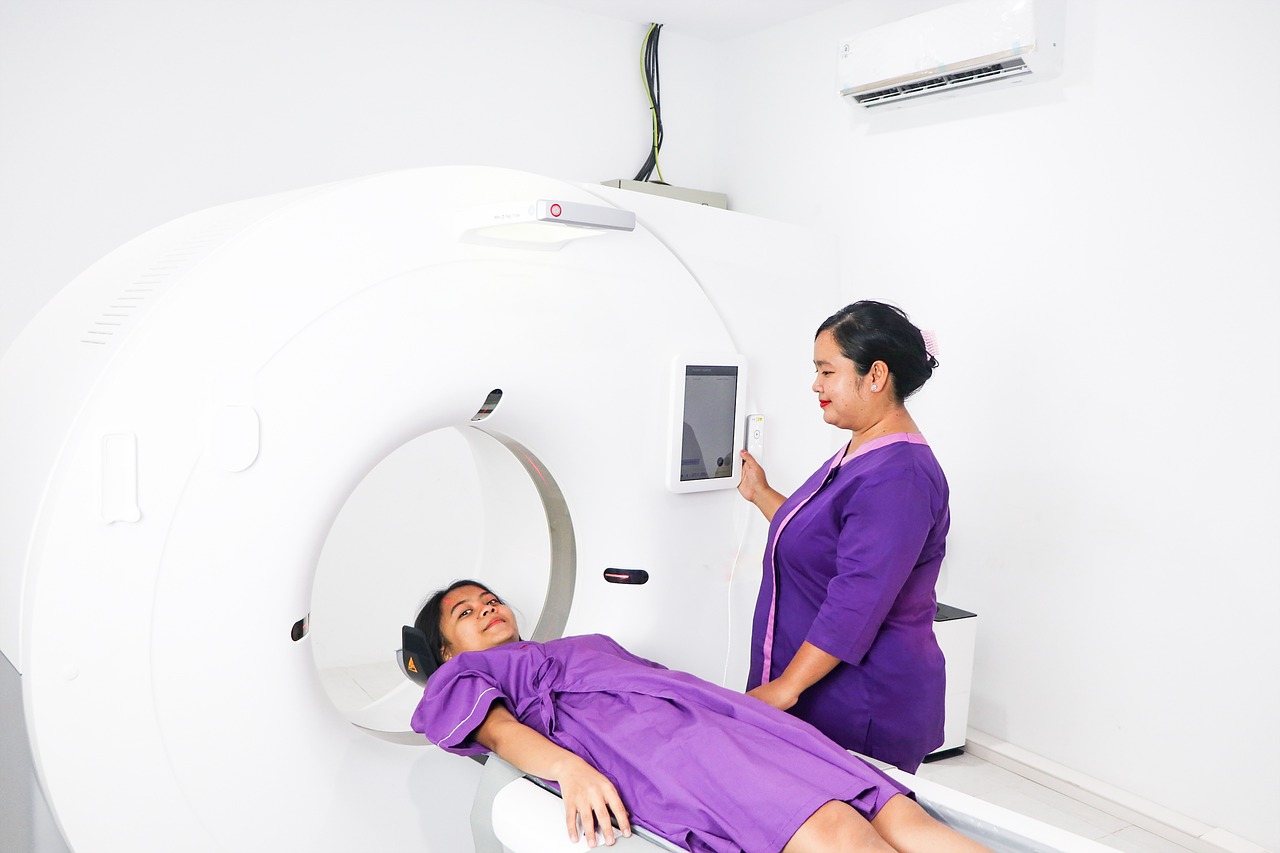Human Behavior: A Dominant Factor in Deciphering Safety Measures
In today's world, where safety is paramount, understanding human behavior is more crucial than ever. Safety measures are often put in place with the expectation that individuals will adhere to them, but the reality is that human behavior can be unpredictable. Have you ever wondered why some people follow safety protocols diligently while others disregard them? The answer lies in the complex interplay of psychological factors, social influences, and emotional responses that shape our actions. This article delves into how these elements affect safety measures across various environments, from workplaces to public spaces, and emphasizes the need for a more nuanced approach to safety that considers human behavior.
To truly enhance safety protocols and reduce risks, we must first grasp the psychology of risk perception. This involves understanding how individuals assess threats and make decisions based on their perceptions of risk. For instance, someone who perceives a high level of danger in a situation is more likely to adhere to safety measures than someone who views the same situation as low-risk. By recognizing these psychological nuances, we can design safety protocols that resonate better with individuals, making them more effective and impactful.
Moreover, the way individuals respond to safety protocols can vary significantly. Some may comply fully, while others might resist or ignore the guidelines altogether. This inconsistency can often be attributed to social norms and peer influences. For example, if a group collectively undervalues safety measures, an individual may feel pressured to conform to that mindset, even if they personally believe in the importance of safety. Understanding the dynamics of peer pressure and the impact of cultural backgrounds can help us develop strategies that foster a culture of safety within groups.
Emotions also play a significant role in how we perceive and react to safety measures. Fear, anxiety, and even overconfidence can skew our decision-making processes, leading to either heightened caution or reckless behavior. For instance, a worker who feels anxious about a potential hazard may take extra precautions, while another who feels invulnerable may disregard safety protocols entirely. By addressing these emotional factors, we can create more effective safety measures that resonate with individuals on a personal level.
In conclusion, human behavior is a dominant factor in deciphering safety measures. By understanding the psychological, social, and emotional influences that drive our actions, we can create more effective safety protocols that not only protect individuals but also promote a culture of safety. As we continue to explore this intricate relationship, we must remember that safety is not just about rules and regulations; it’s about fostering a mindset that values and prioritizes safety in every aspect of life.
- Why is human behavior important in safety measures? Human behavior influences how individuals perceive risks and adhere to safety protocols, making it essential for effective safety management.
- How do emotions affect safety compliance? Emotions like fear and anxiety can either motivate individuals to follow safety measures or lead them to ignore them, depending on their personal experiences and perceptions.
- What role do social norms play in safety behaviors? Social norms can significantly impact an individual's decision to comply with safety measures, as people often look to their peers for cues on acceptable behavior.
- How can training improve safety compliance? Comprehensive and engaging training programs can enhance individuals' understanding and adherence to safety protocols, fostering a stronger culture of safety.

The Psychology of Risk Perception
When it comes to safety measures, understanding human psychology is paramount. Our perception of risk shapes how we engage with safety protocols, often in ways that are not entirely rational. For instance, consider the difference in how people react to a fire alarm compared to a minor earthquake tremor. The alarm triggers a sense of immediate danger, prompting swift action, while the earthquake might be downplayed if it seems minor, even though both situations can pose serious risks. This discrepancy highlights the complex nature of risk perception.
Several factors influence how we perceive risk, and these can vary significantly from one individual to another. Some of the key psychological elements include:
- Personal Experience: Past experiences shape our understanding of risks. Someone who has been in a car accident may perceive driving as more dangerous than someone who has never been in such a situation.
- Media Influence: The portrayal of events in the media can skew our perception of risk. For instance, extensive coverage of a plane crash can lead to an exaggerated fear of flying, despite its statistical safety.
- Social Influence: Our peers and communities can significantly affect our risk perceptions. If the majority express concern about a particular safety issue, individuals are likely to adopt similar views.
Furthermore, cognitive biases play a major role in how we assess risk. For example, the availability heuristic leads us to judge the likelihood of an event based on how easily we can recall similar instances. If we frequently hear about natural disasters, we may overestimate their occurrence in our lives. On the flip side, the optimism bias can cause individuals to underestimate their risk of experiencing negative outcomes, leading to lax adherence to safety measures.
Understanding these psychological factors is crucial for developing effective safety protocols. By recognizing how people perceive risk, organizations can tailor their safety messages and interventions to resonate better with individuals. For example, using relatable scenarios in training can help bridge the gap between theoretical knowledge and real-world application, making safety measures feel more relevant and urgent.
In conclusion, the psychology of risk perception is a complex interplay of personal, social, and cognitive factors. To enhance safety measures, it’s essential to delve into these psychological aspects and address them in safety training and communication strategies. By doing so, we can foster a more informed and compliant attitude towards safety protocols.
- What is risk perception? Risk perception refers to how individuals evaluate the likelihood and severity of potential risks, which can vary greatly based on personal experiences, societal influences, and cognitive biases.
- How does media influence risk perception? Media coverage can amplify fears by highlighting rare but dramatic events, leading people to overestimate the likelihood of such occurrences in their own lives.
- Why is understanding psychology important for safety measures? Understanding psychological factors helps organizations design more effective safety protocols that resonate with individuals, ultimately leading to better compliance and risk management.

Behavioral Responses to Safety Protocols
When it comes to safety protocols, one of the most intriguing aspects is how individuals respond to them. You might think that a set of rules would be universally followed, but the reality is far more complex. People are not robots; they are influenced by a myriad of factors that shape their behavior. This variability in response can be attributed to several key elements, including personal beliefs, past experiences, and even the environment in which they find themselves.
For instance, let’s consider a workplace scenario. Imagine a factory where safety gear is mandatory. Some employees may don their helmets and gloves without a second thought, while others might drag their feet, questioning the necessity of these measures. This divergence in behavior can often be traced back to individual perceptions of risk and the value they place on safety. Those who have experienced accidents firsthand are likely to be more compliant with safety protocols compared to those who haven’t faced such situations. This highlights the importance of understanding the psychological underpinnings of behavior when crafting safety guidelines.
Furthermore, the effectiveness of safety protocols can be significantly enhanced by considering the social context in which individuals operate. When safety measures are perceived as a collective responsibility, compliance tends to increase. For example, in a team-oriented work environment, the desire to conform to group norms can drive individuals to adhere more closely to safety protocols. This is where the role of leadership becomes crucial. Leaders who model safe behavior and cultivate a culture of accountability can influence their teams to follow suit. In fact, studies have shown that organizations with strong safety leadership see improved compliance rates among employees.
To delve deeper into these behavioral responses, it’s essential to recognize the role of emotions. When individuals feel anxious or fearful about potential dangers, they may either overreact or become desensitized to risks. This emotional rollercoaster can lead to inconsistent adherence to safety measures. For instance, someone who is overly cautious might wear multiple layers of protective gear, while another person might disregard safety protocols altogether, believing that "it won’t happen to me." Such emotional responses can create a chasm in compliance, making it imperative for safety programs to address these feelings head-on.
Moreover, the design of safety protocols itself can influence behavior. If safety measures are perceived as overly complex or cumbersome, individuals may be less likely to comply. For example, if a safety protocol requires extensive paperwork or lengthy training sessions, employees might view it as a hassle rather than a necessity. Simplifying these processes and making them more user-friendly can significantly increase adherence. In fact, research indicates that when safety protocols are easy to understand and implement, compliance rates can soar.
As we navigate the intricate landscape of human behavior and safety protocols, it becomes evident that a one-size-fits-all approach simply won’t cut it. Tailoring safety measures to fit the unique dynamics of a group can lead to better outcomes. This could involve conducting surveys to gauge employee attitudes toward safety, or holding workshops to discuss safety concerns openly. By engaging individuals in the conversation, organizations can foster a sense of ownership over safety practices, which in turn encourages compliance.
In summary, understanding behavioral responses to safety protocols is not just about enforcing rules; it's about recognizing the human element in safety. By considering psychological factors, social influences, and emotional responses, organizations can create more effective safety protocols that resonate with individuals. This holistic approach not only improves compliance but ultimately enhances the overall safety culture within any environment.
- What factors influence individual compliance with safety protocols?
Compliance is influenced by personal beliefs, past experiences, social norms, and emotional responses to risk. - How can organizations improve adherence to safety measures?
Organizations can improve adherence by simplifying safety protocols, fostering a culture of accountability, and engaging employees in discussions about safety. - Why is emotional response important in safety behavior?
Emotional responses can lead to either overreaction or desensitization, impacting how individuals perceive and follow safety measures.

Influence of Social Norms
Social norms are the unwritten rules that govern our behavior in society. They act like a compass, guiding our actions and decisions, especially when it comes to safety measures. Have you ever noticed how people tend to follow the crowd? This is not just a coincidence; it’s a powerful psychological phenomenon. When individuals observe others adhering to safety protocols, they are more likely to do the same. Conversely, if they see non-compliance, it can lead to a ripple effect of disregard for safety measures.
Consider this: when a group of friends decides to wear helmets while biking, the likelihood of each individual wearing one increases significantly. This is because the group dynamic reinforces the idea that wearing a helmet is not just a personal choice but a social expectation. Social norms can create a sense of accountability among peers, which can be incredibly beneficial in promoting safety. However, the opposite can also be true. If a group of individuals disregards safety protocols, it can create an environment where non-compliance becomes the norm.
Moreover, the influence of social norms can vary across different demographics. For instance, younger individuals may be more susceptible to peer pressure compared to older adults. This can be attributed to their developmental stage, where the desire for acceptance and belonging is heightened. Therefore, understanding the demographic factors at play is crucial in designing effective safety campaigns. Safety messages that resonate with specific groups can leverage social norms to foster positive behaviors.
To illustrate the impact of social norms on safety behaviors, consider the following table:
| Group Type | Norms Influencing Behavior | Example |
|---|---|---|
| Friends | Encouragement of safety gear usage | Wearing helmets while biking |
| Workplace | Mandatory safety training compliance | Following fire drill procedures |
| Community | Collective adherence to health guidelines | Wearing masks during a pandemic |
In summary, social norms play a crucial role in shaping individual behaviors regarding safety measures. By understanding and leveraging these norms, organizations and communities can create more effective safety campaigns that resonate with their target audiences. The key lies in fostering an environment where safety is not just a personal responsibility but a collective value shared by all.
- What are social norms? Social norms are the accepted behaviors and beliefs within a group or society that guide individuals in their actions.
- How do social norms influence safety behavior? They create expectations for behavior, making individuals more likely to comply with safety measures when they see others doing the same.
- Can social norms be changed? Yes, through targeted campaigns and education, communities can shift social norms to promote safer behaviors.
- Why are social norms important in safety protocols? They help establish a culture of safety, encouraging individuals to prioritize and adhere to safety measures.

Peer Pressure and Compliance
Peer pressure is a powerful force that can significantly impact compliance with safety measures. It's that invisible hand that pushes individuals towards certain behaviors, often without them even realizing it. Imagine a group of friends deciding whether to wear helmets while biking. If one person opts out, others might follow suit, thinking, "If they don't wear one, why should I?" This scenario illustrates how group dynamics can sway personal decisions, sometimes leading to risky behaviors that compromise safety.
Understanding the nuances of peer pressure is crucial for developing effective safety protocols. When we think about compliance, we must consider how individuals are influenced by their peers. This influence can be both positive and negative. For instance, in a workplace setting, if employees witness their colleagues consistently adhering to safety protocols, they are more likely to do the same. Conversely, if they see peers cutting corners, the likelihood of them doing the same increases dramatically.
To harness the positive aspects of peer pressure, organizations can create a culture where safety is a shared responsibility. Here are some strategies that can be employed:
- Encourage Team-Based Safety Initiatives: Creating safety teams can promote accountability and collective adherence to protocols.
- Recognize and Reward Compliance: Acknowledging individuals or teams that consistently follow safety measures can motivate others to comply.
- Foster Open Communication: Encouraging discussions about safety concerns can help address peer pressure dynamics and reinforce positive behaviors.
Moreover, it's essential to recognize that peer pressure is not just limited to negative influences. Positive peer pressure can lead to a strong culture of safety where individuals feel empowered to speak up and hold each other accountable. This creates an environment where safety becomes a shared value, making compliance not just a requirement but a norm.
In conclusion, peer pressure plays a significant role in shaping individual behaviors regarding safety compliance. By understanding and leveraging this influence, organizations can develop strategies that promote positive behaviors, ultimately leading to safer environments. The key lies in fostering a culture where safety is valued and encouraged, making compliance a natural part of everyday actions.
- What is peer pressure? Peer pressure refers to the influence exerted by a peer group on its individual members to fit in or conform to group norms.
- How does peer pressure affect safety compliance? Peer pressure can lead individuals to either comply with or disregard safety measures based on the behaviors of their peers.
- Can peer pressure be positive? Yes, positive peer pressure can encourage individuals to follow safety protocols and promote a culture of safety within groups.
- What strategies can help mitigate negative peer pressure? Strategies include fostering open communication, recognizing compliance, and encouraging team-based initiatives.

Culture and Safety Attitudes
Cultural background plays a pivotal role in shaping attitudes towards safety. Different cultures have distinct beliefs, values, and practices that influence how individuals perceive risks and adhere to safety protocols. For instance, in some cultures, there is a strong emphasis on community and collective well-being, which can lead to a higher compliance rate with safety measures. Conversely, in cultures that prioritize individualism, people may be less inclined to follow safety protocols if they perceive them as infringing on personal freedoms.
It's fascinating to observe how cultural narratives and historical contexts affect safety attitudes. In regions where there has been a history of industrial accidents or natural disasters, the populace may develop a heightened awareness of safety issues. This awareness can foster a culture of proactive safety measures where individuals are more likely to engage in precautionary behaviors. On the other hand, in cultures where safety incidents are rare, people might underestimate risks, leading to a lax attitude towards safety protocols.
Moreover, traditional beliefs and values can significantly impact how safety messages are received. For instance, in some cultures, there is a strong belief in fate or destiny, which may lead individuals to feel that safety measures are unnecessary. This can create a challenging environment for safety professionals who are trying to implement effective protocols. Understanding these cultural nuances is essential for developing tailored safety programs that resonate with specific populations.
To illustrate this, consider the following table that summarizes how different cultural attitudes influence safety compliance:
| Cultural Attitude | Influence on Safety Compliance |
|---|---|
| Collectivist Cultures | Higher compliance due to community focus and shared responsibility. |
| Individualist Cultures | Lower compliance as personal freedom may take precedence over safety. |
| High-Context Cultures | Reliance on non-verbal cues and relationships may affect communication of safety protocols. |
| Low-Context Cultures | Direct communication leads to clearer understanding of safety measures. |
In conclusion, understanding the interplay between culture and safety attitudes is crucial for enhancing safety protocols across diverse environments. By acknowledging and respecting cultural differences, safety professionals can create more effective communication strategies, ultimately leading to improved adherence to safety measures. The goal is to foster a culture where safety is seen not just as a set of rules to follow, but as a shared value that benefits everyone.
- How does culture impact safety compliance? - Cultural beliefs and values significantly influence individual attitudes towards safety and risk perception.
- What role do community values play in safety? - In collectivist cultures, community well-being often leads to higher compliance with safety measures.
- Can safety protocols be adapted to different cultures? - Yes, understanding cultural nuances allows for the development of tailored safety programs that resonate with specific populations.

Emotional Factors in Decision-Making
When it comes to safety, emotions can be the silent but powerful players in the decision-making process. Imagine standing at the edge of a busy street, waiting to cross. Your heart races, palms sweat, and suddenly, that little voice in your head whispers, “What if I get hit?” This is a classic example of how fear can influence our actions. It’s not just about the physical risks we face; it’s about how we emotionally perceive those risks. Understanding this dynamic is crucial for developing effective safety protocols.
Emotions like fear, anxiety, and even confidence can shape our reactions to safety measures. For instance, a person who has experienced a near-miss accident may become overly cautious, leading to heightened anxiety every time they engage in similar activities. Conversely, someone who feels confident in their abilities may underestimate risks, thinking, “I’ve got this!” This can lead to a dangerous disregard for necessary safety measures.
To better grasp how emotions impact decision-making, let’s consider a few key emotional factors:
- Fear: Often a motivator for compliance, fear can lead individuals to adhere to safety protocols, but it can also cause paralysis or avoidance.
- Anxiety: A heightened state of worry can cloud judgment, leading to either over-caution or reckless behavior, depending on the individual.
- Confidence: A sense of confidence can encourage risk-taking, making people less likely to follow safety guidelines.
Furthermore, emotional responses can vary widely among different groups. For example, a workplace that promotes a culture of safety may foster a sense of community and shared responsibility, reducing individual anxiety about compliance. In contrast, a high-pressure environment may exacerbate feelings of fear or inadequacy, leading to poor safety practices.
It’s also essential to consider how emotional factors can be influenced by external conditions. For example, during a crisis, such as a natural disaster, people often experience heightened emotions. The chaos and uncertainty can lead to panic, which might hinder rational decision-making. Conversely, effective communication and reassurance can help mitigate these emotional responses, guiding individuals toward safer choices.
Incorporating an understanding of emotional factors into safety training can significantly improve outcomes. When individuals are educated about their emotional responses and taught strategies to manage them, they are more likely to comply with safety measures. For instance, training sessions that include scenario-based learning can help participants recognize and control their emotional reactions in real-time situations.
Ultimately, addressing emotional factors in decision-making is essential for creating a robust safety culture. By recognizing the power of emotions, organizations can develop strategies that not only inform but also resonate with individuals on a personal level, leading to safer environments for everyone.
- How do emotions influence safety behavior? Emotions can significantly impact how individuals perceive risks and comply with safety measures. Fear may encourage compliance, while overconfidence can lead to risky behavior.
- Can training help manage emotional responses to safety? Yes, effective training can help individuals recognize and manage their emotional responses, leading to better decision-making in safety situations.
- What role does workplace culture play in emotional responses? A positive workplace culture can reduce anxiety and encourage compliance, while a high-pressure environment may exacerbate negative emotional responses.

Training and Education's Role
When it comes to enhancing safety measures, effective training and education are absolutely vital. Imagine trying to navigate a complex maze without a map—this is what many individuals face when they are not adequately trained on safety protocols. Without proper guidance, the chances of making mistakes increase dramatically, leading to potential hazards. Comprehensive training programs not only provide the necessary knowledge but also instill confidence in individuals, enabling them to respond effectively in emergency situations. It's essential to remember that safety is not just a set of rules; it’s a culture that needs to be cultivated through ongoing education.
One of the key aspects of effective training is its ability to engage participants. Traditional training methods, such as lectures or handouts, often fall flat when it comes to keeping attention and fostering retention. Instead, incorporating interactive learning techniques can transform the training experience. For example, simulations, role-playing, and hands-on activities allow individuals to practice their skills in a controlled environment, making the learning process more relatable and memorable. This kind of experiential learning is crucial, as it helps individuals internalize safety practices and understand their importance in real-life situations.
Moreover, continuous education and reinforcement of safety protocols are essential for long-term behavior change. Just like how we need to regularly update our software to ensure optimal performance, individuals must also refresh their knowledge on safety measures. This can be achieved through periodic training sessions, workshops, and refresher courses. By keeping safety at the forefront of employees' minds, organizations can foster a culture of safety that becomes second nature to everyone involved.
To further illustrate the importance of training and education, let's take a look at a simple table that outlines the key benefits:
| Benefits of Training and Education | Description |
|---|---|
| Improved Knowledge | Participants gain a deeper understanding of safety protocols and their importance. |
| Increased Confidence | Individuals feel more prepared to handle emergencies and unexpected situations. |
| Enhanced Compliance | Regular training reinforces adherence to safety measures, reducing risks. |
| Culture of Safety | Ongoing education fosters an environment where safety is prioritized. |
In conclusion, the role of training and education in safety cannot be overstated. By investing in comprehensive training programs and fostering a culture of continuous learning, organizations can significantly enhance safety measures and reduce risks. It's about creating an environment where everyone feels empowered to prioritize safety, making it an integral part of their daily routines.
- Why is training important for safety?
Training equips individuals with the necessary skills and knowledge to handle safety protocols effectively. - How often should safety training be conducted?
Regular training sessions should be held, ideally at least once a year, with refresher courses as needed. - What are some effective training methods?
Interactive methods such as simulations, role-playing, and hands-on activities are highly effective in engaging participants. - How can organizations foster a culture of safety?
By prioritizing continuous education and encouraging open communication about safety practices.

Interactive Learning Techniques
When it comes to safety training, traditional methods can sometimes feel a bit stale, right? That's where come into play. These methods are designed to engage participants actively, making the learning experience not just informative but also enjoyable. Imagine being part of a training session where you're not just sitting and listening, but rather participating in hands-on activities, discussions, and simulations. This approach can significantly enhance the retention of safety information and foster a deeper understanding of protocols.
One of the most effective interactive learning techniques is the use of simulations. Simulations allow individuals to practice safety procedures in a controlled environment, mimicking real-life scenarios without the associated risks. For example, in a fire safety training session, participants might engage in a simulated evacuation. This not only helps them understand the importance of quick decision-making but also builds their confidence in handling emergencies. The thrill of experiencing a situation firsthand is often more impactful than merely reading about it in a manual.
Another engaging technique is the incorporation of group discussions. By breaking participants into small groups, you encourage them to share their thoughts and experiences related to safety. This peer-to-peer interaction can lead to a richer understanding of the subject matter. For instance, during a discussion on workplace safety, one participant might share a personal story about a near-miss incident, prompting others to reflect on their practices. Such exchanges can illuminate different perspectives and highlight the importance of adhering to safety protocols.
Moreover, using gamification in training can significantly boost engagement levels. By introducing game-like elements, such as quizzes or competitions, learners are more likely to stay focused and motivated. Consider a safety training session where participants earn points for correctly identifying hazards or completing safety tasks. Not only does this make learning fun, but it also reinforces the material in a memorable way. The competitive aspect can encourage participants to strive for excellence, ultimately leading to better safety practices in the workplace.
To further illustrate the effectiveness of interactive learning techniques, let's take a look at a simple comparison of traditional training methods versus interactive methods:
| Aspect | Traditional Training | Interactive Training |
|---|---|---|
| Engagement Level | Low | High |
| Retention of Information | Moderate | High |
| Real-World Application | Limited | Extensive |
| Feedback Opportunities | Minimal | Frequent |
As you can see, interactive training methods offer a multitude of benefits that traditional methods simply can't match. By fostering an environment where learners are encouraged to participate and engage, organizations can significantly improve the effectiveness of their safety training programs. Ultimately, when individuals feel more connected to the material, they are more likely to apply what they've learned in real-life situations, leading to a safer environment for everyone involved.
- What are interactive learning techniques?
Interactive learning techniques involve engaging participants in hands-on activities, discussions, and simulations to enhance understanding and retention of information. - How do simulations improve safety training?
Simulations allow individuals to practice safety procedures in realistic scenarios, building confidence and decision-making skills without real-world risks. - Can gamification be effective in safety training?
Yes! Gamification introduces game-like elements that make learning fun and competitive, increasing motivation and engagement among participants.

Continuous Education and Reinforcement
When it comes to safety, one-time training sessions are just not enough. Imagine trying to remember all the intricate details of a safety protocol after a single lecture—it's like trying to memorize a phone book! That's why continuous education and reinforcement are critical components in fostering a culture of safety within any organization or community. Just as a plant needs regular watering and sunlight to thrive, individuals need ongoing training and reminders to maintain their safety awareness and compliance.
Continuous education involves regularly updating safety training programs to reflect new information, technologies, and practices. It's not just about keeping up-to-date; it's about embedding safety into the very fabric of daily operations. This could mean conducting refresher courses, offering new workshops, or even implementing short daily safety huddles. The goal is to keep safety at the forefront of everyone’s mind, making it a natural part of their routine. For instance, a construction site might hold weekly safety briefings to discuss recent incidents or changes in protocols, ensuring that everyone is aligned and informed.
Reinforcement, on the other hand, is about providing consistent reminders and incentives to encourage safe behaviors. This could take the form of visual cues, like posters or digital reminders, that highlight key safety protocols. Additionally, recognizing and rewarding individuals or teams who consistently follow safety measures can create a positive feedback loop. For example, a company might implement a “Safety Star” program where employees are acknowledged for their commitment to safety, fostering a sense of pride and accountability among peers.
To illustrate the effectiveness of continuous education and reinforcement, consider the following table that outlines various strategies and their potential impacts:
| Strategy | Description | Impact |
|---|---|---|
| Regular Refresher Courses | Short, periodic training sessions to revisit safety protocols. | Increased retention of information and skills. |
| Visual Reminders | Posters, flyers, and digital alerts that reinforce safety messages. | Enhanced awareness and compliance in daily activities. |
| Recognition Programs | Incentives for individuals or teams that exemplify safety practices. | Motivation to adhere to safety measures and improve morale. |
Moreover, the effectiveness of these strategies is amplified when they are tailored to the specific needs of the organization or community. For instance, a factory might benefit from hands-on training that simulates emergency situations, while an office environment might focus more on ergonomic safety and mental health awareness. By customizing the training and reinforcement methods, organizations can ensure that their safety initiatives resonate with their employees, leading to more significant and lasting behavior change.
In conclusion, continuous education and reinforcement are not just add-ons to safety protocols; they are essential to creating a robust safety culture. By committing to ongoing training and consistent reminders, organizations can empower individuals to take ownership of their safety and the safety of those around them. After all, in the realm of safety, knowledge is power, and the more informed and engaged individuals are, the safer everyone will be.
- Why is continuous education important for safety? Continuous education helps keep safety protocols fresh in employees' minds, ensuring they are always prepared for potential hazards.
- How can reinforcement be implemented effectively? Reinforcement can be achieved through visual reminders, recognition programs, and regular feedback on safety practices.
- What are some effective training methods for safety? Interactive learning techniques, hands-on simulations, and scenario-based training can enhance engagement and retention of safety information.

The Impact of Technology on Safety Behavior
In today's fast-paced world, technology has become a game-changer in how we approach safety measures across various sectors. From construction sites to healthcare facilities, the integration of technology is not just a trend—it's a necessity. But how exactly does technology influence our behavior when it comes to safety? The answer lies in its ability to enhance our awareness, streamline communication, and provide real-time feedback. Imagine walking into a workplace where safety protocols are not just guidelines but are actively monitored and reinforced through technology. This is the new reality, and it’s transforming the way we think about safety.
One of the most significant advancements in this area is the rise of wearable safety devices. These gadgets, which include smart helmets, safety vests with built-in sensors, and even smart glasses, are designed to monitor the environment and alert users to potential hazards. For instance, a worker in a high-risk area wearing a smart helmet can receive immediate notifications if they are approaching a dangerous zone or if environmental conditions change unexpectedly. This real-time data not only promotes a culture of safety but also empowers individuals to make informed decisions on the spot. The psychological impact of knowing that technology is watching out for them can significantly boost employees' confidence in adhering to safety protocols.
Moreover, the advent of apps and digital platforms has revolutionized how safety information is disseminated. Gone are the days when safety manuals were dusty tomes hidden away on a shelf. Now, with just a few taps on a smartphone, employees can access up-to-date safety guidelines, training modules, and incident reporting tools. This accessibility encourages individuals to stay informed and engaged with safety practices. For example, some companies have developed apps that allow workers to report hazards immediately, creating a sense of community responsibility. When everyone is involved in safety, compliance becomes a collective effort rather than an individual task.
However, it’s essential to recognize that while technology can enhance safety behaviors, it is not a silver bullet. The effectiveness of these tools largely depends on how they are implemented and embraced within an organization. Training programs must evolve to incorporate these technologies, ensuring that employees not only understand how to use them but also appreciate their value in promoting safety. This brings us to the importance of training and education in conjunction with technological advancements.
To illustrate the impact of technology on safety behavior, consider the following table that outlines various technologies and their benefits:
| Technology | Benefits |
|---|---|
| Wearable Devices | Real-time hazard alerts, enhanced situational awareness |
| Mobile Apps | Instant access to safety information, easy reporting of hazards |
| Virtual Reality Training | Immersive learning experiences, safe simulation of hazardous situations |
| Automated Safety Systems | Continuous monitoring, proactive risk management |
As we move forward, the integration of technology into safety protocols will likely continue to evolve. Will we see more innovative solutions that not only protect workers but also change their perceptions of safety? The potential is limitless, and it's crucial for organizations to stay ahead of the curve. By fostering a culture that embraces technology, we can ensure that safety becomes not just a priority but a shared value among all employees.
- How can technology improve safety compliance? Technology provides real-time feedback, enhances communication, and makes safety information more accessible, leading to better compliance.
- Are wearable safety devices effective? Yes, they can significantly increase situational awareness and alert users to potential hazards, promoting proactive safety behaviors.
- What role do apps play in workplace safety? Apps facilitate instant access to safety guidelines and allow for immediate reporting of hazards, fostering a culture of safety.
- Is training still necessary with advanced technology? Absolutely! Training ensures that employees understand how to use new technologies effectively and appreciate their role in enhancing safety.

Wearable Safety Devices
In recent years, have emerged as a game-changer in various industries, revolutionizing the way we approach safety measures. These innovative gadgets, which include smart helmets, safety vests, and wristbands, are designed not only to enhance individual safety but also to monitor and manage risks in real-time. Imagine a construction worker equipped with a smart helmet that alerts them to potential hazards in their environment—this is no longer just a dream but a reality made possible by advancements in technology. These devices are not only crucial for personal safety but also play a significant role in fostering a culture of safety within organizations.
One of the most compelling aspects of wearable safety devices is their ability to provide real-time data. For instance, many devices are equipped with sensors that can track environmental conditions such as temperature, humidity, and even the presence of toxic gases. This information is invaluable, as it allows workers to make informed decisions about their safety. Additionally, these devices can monitor physiological signs, such as heart rate and fatigue levels, alerting users when they may be at risk of overexertion or health-related issues. By integrating these technologies into daily operations, organizations can significantly reduce the likelihood of accidents and injuries.
Moreover, the use of wearable safety devices is not limited to high-risk professions. They can be beneficial in various settings, including healthcare, manufacturing, and even outdoor recreational activities. For example, a healthcare worker wearing a smart wristband can receive alerts about potential exposure to infectious diseases, while a hiker can use a GPS-enabled device to ensure they stay on safe trails. The versatility of these devices makes them an essential tool for enhancing safety across different environments.
As we delve deeper into the world of wearable safety devices, it’s essential to consider the impact on compliance and behavior. When individuals feel that their safety is being actively monitored and supported by technology, they are more likely to adhere to safety protocols. This creates a positive feedback loop where enhanced safety measures lead to increased compliance, ultimately resulting in a safer work environment. However, it’s crucial for organizations to ensure that these devices are user-friendly and provide clear benefits to encourage widespread adoption.
In summary, wearable safety devices are transforming the landscape of safety management. By leveraging technology to monitor risks and promote safe behaviors, these devices not only protect individuals but also enhance overall workplace safety culture. As we continue to innovate and improve these technologies, the potential for reducing accidents and saving lives becomes increasingly promising.
- What are wearable safety devices?
Wearable safety devices are gadgets designed to enhance individual safety and monitor risks in real-time, such as smart helmets and safety vests.
- How do wearable safety devices improve workplace safety?
They provide real-time data about environmental conditions and physiological signs, allowing for informed decision-making and risk management.
- Are these devices only for high-risk professions?
No, wearable safety devices can be beneficial in various settings, including healthcare, manufacturing, and outdoor activities.
- How do these devices affect compliance with safety protocols?
When individuals feel monitored and supported by technology, they are more likely to adhere to safety protocols, fostering a safer work environment.

Apps and Digital Platforms
In today's fast-paced world, technology has become a game-changer, especially when it comes to enhancing safety measures through apps and digital platforms. These tools not only streamline communication but also provide a means to disseminate crucial safety information effectively. Imagine a world where safety updates and protocols are just a tap away on your smartphone. Sounds convenient, right? This convenience is not just a luxury; it's a necessity in environments where safety is paramount.
Apps designed for safety management can serve multiple functions, such as real-time alerts, training modules, and reporting mechanisms. For instance, consider a workplace where employees are required to follow strict safety protocols. With a dedicated safety app, they can receive instant notifications about potential hazards, access training videos, and even report incidents directly to management. This immediacy fosters a culture of safety that is proactive rather than reactive.
Moreover, digital platforms can facilitate the sharing of best practices and safety guidelines among users. By creating a community around safety, individuals can learn from each other’s experiences and insights. Think about it: when people feel connected and supported, they are more likely to engage with safety measures actively. This peer-to-peer interaction can be crucial in promoting adherence to safety protocols.
Another significant advantage of using apps and digital platforms is the ability to track compliance and gather data on safety behaviors. Organizations can analyze this data to identify trends, strengths, and areas for improvement. For example, if a particular safety measure is consistently ignored, it raises a red flag that can lead to further investigation and targeted training. This data-driven approach ensures that safety measures evolve based on actual user behavior rather than assumptions.
To illustrate the impact of these technologies, let’s examine a few key features that make safety apps indispensable:
- Real-Time Notifications: Instant alerts about safety updates or emergencies can save lives.
- Training Resources: Access to safety training materials on-demand ensures that employees are always informed.
- Incident Reporting: Easy reporting mechanisms allow for prompt action and accountability.
- Data Analytics: Insights drawn from user interactions help in refining safety protocols.
In conclusion, the integration of apps and digital platforms into safety protocols represents a significant leap forward in how we approach safety. By harnessing the power of technology, we can create a more informed, engaged, and compliant workforce. The future of safety is not just about having protocols in place; it's about ensuring that everyone has access to the information they need to stay safe.
- How can apps improve workplace safety? Apps can provide real-time updates, training resources, and easy reporting mechanisms to enhance safety awareness and compliance.
- What features should a safety app have? Essential features include real-time notifications, access to training materials, incident reporting, and data analytics capabilities.
- Can digital platforms foster a culture of safety? Yes, by facilitating communication and sharing best practices, digital platforms can create a supportive community that encourages adherence to safety protocols.
Frequently Asked Questions
- How does human behavior affect safety measures?
Human behavior plays a critical role in the effectiveness of safety measures. People's perceptions, emotions, and social influences can significantly impact their compliance with safety protocols. By understanding these behavioral factors, organizations can design better safety strategies that resonate with individuals.
- What is risk perception and why is it important?
Risk perception refers to how individuals assess the likelihood and severity of potential hazards. It's crucial because it shapes how people respond to safety measures. When individuals perceive risks accurately, they are more likely to adhere to safety protocols, thus enhancing overall safety.
- How do social norms influence safety behavior?
Social norms significantly impact how individuals behave regarding safety measures. When safety practices are viewed positively within a group, individuals are more likely to follow suit. Conversely, if safety measures are not prioritized by peers, compliance can diminish.
- Can emotions affect decision-making about safety?
Absolutely! Emotions like fear and anxiety can heavily influence how individuals respond to safety protocols. For instance, fear of accidents might lead to stricter adherence to safety rules, while complacency can lead to negligence. Recognizing these emotional drivers is key to improving safety compliance.
- What role does training play in promoting safety?
Training is essential for instilling a culture of safety. Effective training programs not only educate individuals about safety protocols but also engage them in interactive learning, making them more likely to remember and apply what they've learned in real-life situations.
- How can technology enhance safety behaviors?
Technology can play a transformative role in enhancing safety behaviors. Tools like wearable safety devices and safety apps facilitate real-time monitoring and communication about safety protocols, making it easier for individuals to stay informed and compliant.
- What are wearable safety devices?
Wearable safety devices are gadgets that individuals can wear to monitor their safety in various environments. These devices can track health metrics, detect hazardous conditions, or provide alerts, thereby promoting a proactive approach to safety.
- How can continuous education improve safety compliance?
Continuous education reinforces safety protocols over time, ensuring that individuals remain aware and informed about best practices. Regular updates, refreshers, and training sessions help maintain a high level of safety awareness and compliance.



















